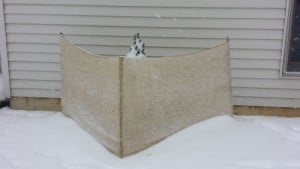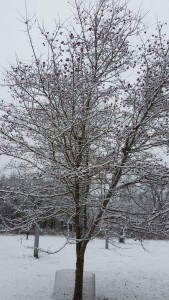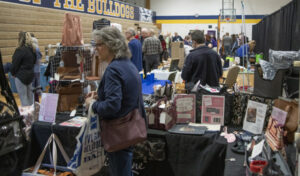
(Chelsea Update would like to thank Jennifer Fairfield, owner of The Garden Mill, for the information in this column.)
Did our pre-Thanksgiving snowstorm take you by surprise?
I know lots of people who have said they didn’t finish all their fall clean-up chores before the snow hit, and were worried they wouldn’t be able to get things put away. Luckily, the warm-up and rain took care of the snow, and we now have the opportunity to finish up.
I have often said that it’s best to get the clean-up done when the weather is nice so that you aren’t racing the weather, or freezing yourself while you’re doing it, but I didn’t exactly follow my own advice this year. I didn’t get my rain barrels emptied and my hoses put away until the day before the snow came, and I was running around in the cold and wind trying to get it all done.
I got lulled in by all that beautiful, warm weather we were having, and thought it was just going to keep coming. I should know better – after all, our state is literally shaped like a piece of winter apparel. (No, I didn’t think that one up on my own – I’m not sure who did, but a friend posted it to Facebook, and I thought it was too good not to share.)

Time to Clean Up
Now that the snow is gone, and the temps are a little bit warmer, if you haven’t finished all the clean-up, get it done now, before we get another reminder that winter is on its way. Keep your hoses handy, though. As long as the ground isn’t frozen, you should keep watering your trees whenever we don’t get at least an inch of rain (or approximately 10 inches of snow) each week.
We had a very dry summer and early fall, and it’s not good for our trees to go into winter low on water.
Wind screens
Another thing to do for your evergreen trees and shrubs, before the ground freezes, is to put up wind screens to help keep them from drying out over the winter.
When the ground is frozen, plants can’t take up water, but evergreens especially can lose what water they have when it’s windy. The burlap we sell at the store is my screen of choice, because it allows some air flow, but provides protection from the worst drying effects of the wind. Drive stakes into the ground, and then attach the burlap to the stakes, using cable ties or sturdy string.
The burlap screen should at least be placed along the west and southwest sides of the plant, or even all around, depending on where your plants are placed and how much wind they tend to get. Leave the top open, so the plants can get sun.

Mulch
With the type of winter that the weather gurus are calling for this year, mulch is going to be important to help your perennials, shrubs, and trees survive. The forecast seems to be that we will be warmer than the last two winters, and won’t get as much snow. That doesn’t mean that it won’t get cold or that we won’t get snow at all.
My concern is that it will fluctuate, and that can cause issues like frost heave for our plants. Frost heave usually happens when the soil thaws and then freezes again, which can cause plants’ roots to “heave” out of the ground. Plants can have a hard time surviving this, so a good mulch cover can work to keep the soil frozen during the winter, helping to prevent damage. Add mulch to your flower beds, shrubs, and trees after the ground has frozen, to avoid keeping the ground warmer longer.
Wet snow
The wet snow we got was the type that can cause a lot of damage to trees and shrubs, as my poor Washington Hawthorn can attest to this. Heavy snow can weigh down and potentially break branches, so promptly remove snow to help prevent damage. It’s easy to do more harm than good though, if you’re not careful.
Use a broom, and gentle upward motions to sweep away the snow. Banging on frozen branches to shake off snow can break them. If we get ice, the best thing to do is nothing. Trying to remove ice from your trees can often cause more harm than good.
(Part II will publish tomorrow.)













